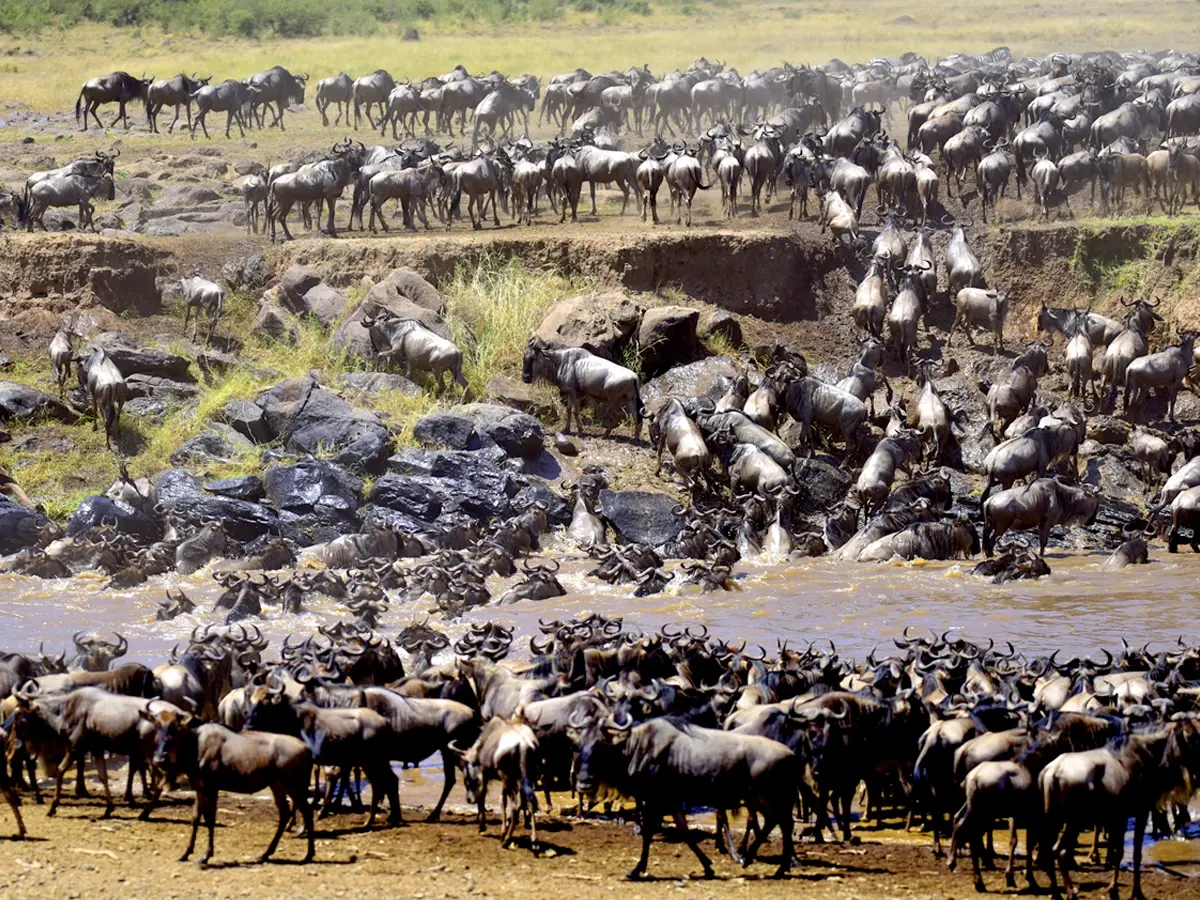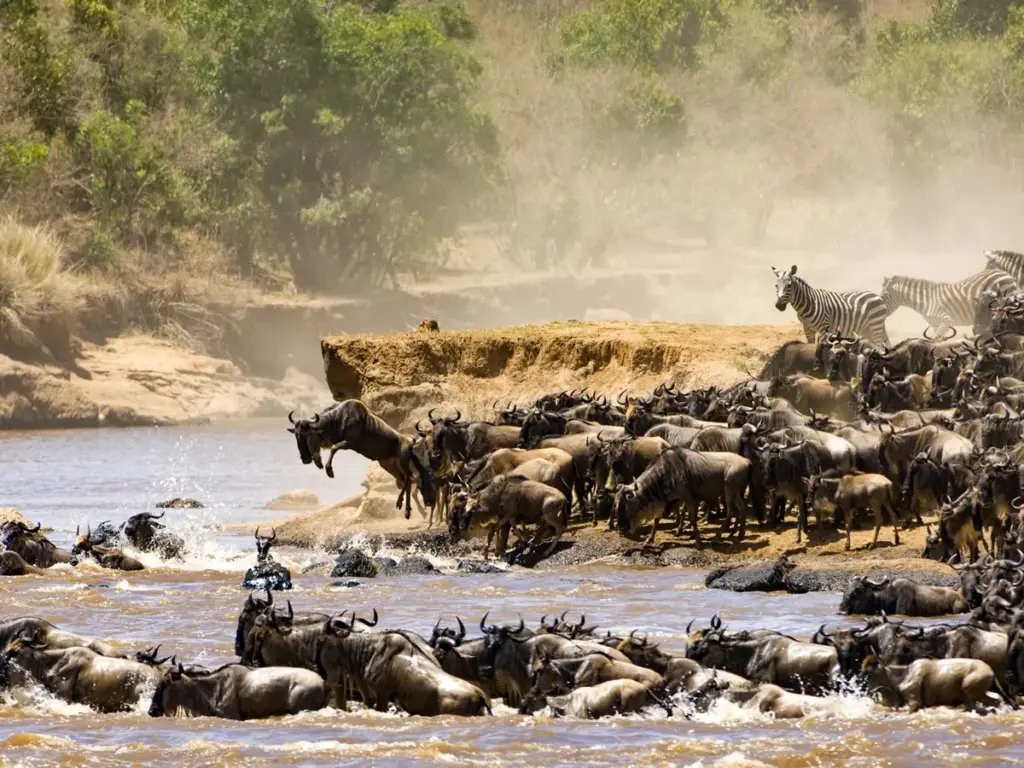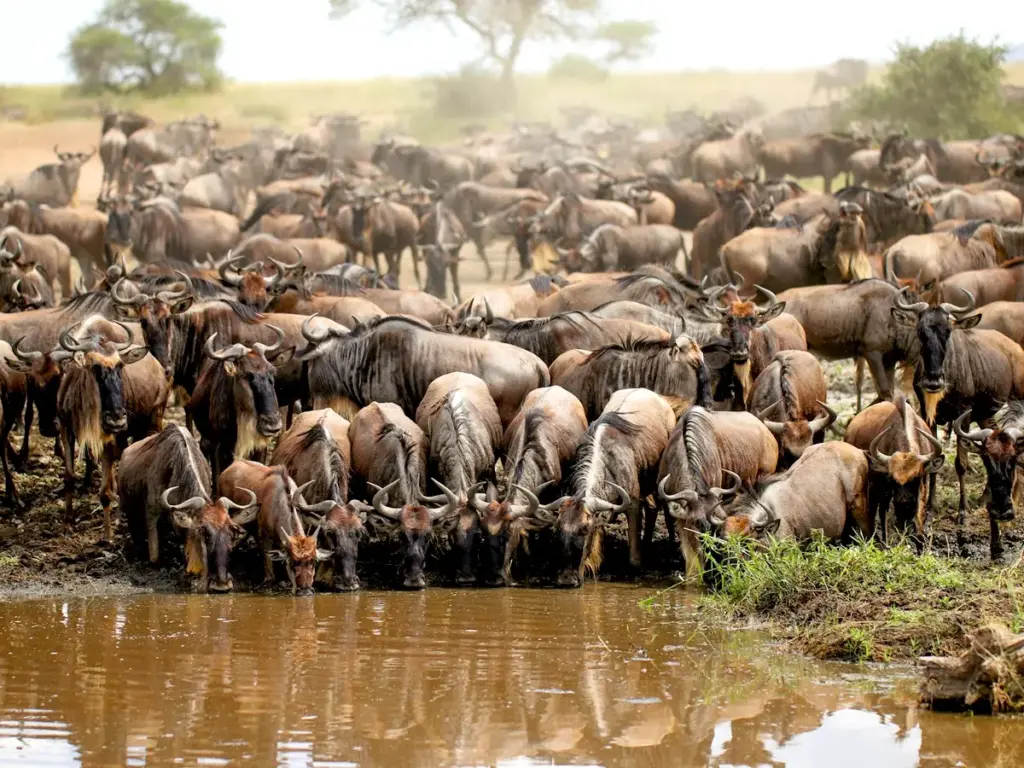
The Great Migration unfolds as a year-round cyclic event, where over a million wildebeests, zebras, gazelles, elands, and other antelopes move across vast distances – all in pursuit of sustenance, safety, and the continuation of their species. It is regarded as one of the largest and ancient wildlife migrations on Earth.
Starting from the eastern Serengeti, the herds move southward into the northwestern Ngorongoro Conservation Area, continue their path through the central and western Serengeti, then head north to the Maasai Mara, only to return southward once more, following the central and eastern parts of the Serengeti.
Revered as one of the Seven Wonders of the Natural World, the great migration stands as a testament to the relishing power of nature.
In this blog, we will uncover the extraordinary phenomenon of the Great Migration River Crossing, a testament to the compelling power of nature’s cycles.

Within the African landscape, two formidable river crossings stand out: the Grumeti River in Tanzania and the Mara River in Kenya.
Extending nearly 248.5 miles (400 kilometers), these rivers pose barriers due to their depth, rugged terrain, and a resident population of countless crocodiles and hippos.
The Mara River crossing typically occurs between July and August, while the Grumeti River crossing unfolds from May to July.
While witnessing a river-crossing herd is undeniably breathtaking, it is crucial to note that these events are sporadic. Herds may linger by the river for days, strategizing safe passage. One Nature’s prime location places you at the heart of Serengeti, enhancing your chances of witnessing the captivating Great Migration River Crossing.

A river crossing is an experience that exemplifies the raw beauty of Africa – a sight you cannot afford to miss.
Every year, more than 2 million animal gather at the river’s edge, poised for their daunting voyage. The rivers flow fast, the banks are steep, and ancient reptilian predators hide beneath the surface.
One of the most riveting aspects of these crossings is the presence of Nile crocodiles. These apex predators, concealed beneath the rippling waters, inject an element of suspense into every scene.
On average, out of the 1.5 million wildebeest that trek into the Mara from the Serengeti each year, 300,000 die. Most of them killed by the Nile crocodiles, and a few by the predator waiting for them on the other side.
Fact: Wildebeest – both alive and dead – influence the landscape in ways that are not obvious at first. The carcasses that float down the river nourish an entire ecosystem – river fish, microorganisms, birds, and even hippos. Their bones take years to break down beneath the water’s surface, functioning as slow-release fertilizers for plants. It is a circle of life, where every part plays a role in the intricate dance of nature.
As a witness to this majestic natural drama, you cannot help but humble the resilience of these animals, and their unwavering determination to survive.
The Great Migration River Crossing is a once-in-a-lifetime experience, elevated to unparalleled heights when experienced from the comfort of One Nature Nyaruswiga.
Our expert guides ensure the best vantage points, ensuring you can capture incredible photos and make lasting memories. Enjoy our delectable, packed lunch as you eagerly await the thrilling river crossing.
Join us at One Nature Nyaruswiga for an unforgettable journey of witnessing the Great Migration River Crossing.